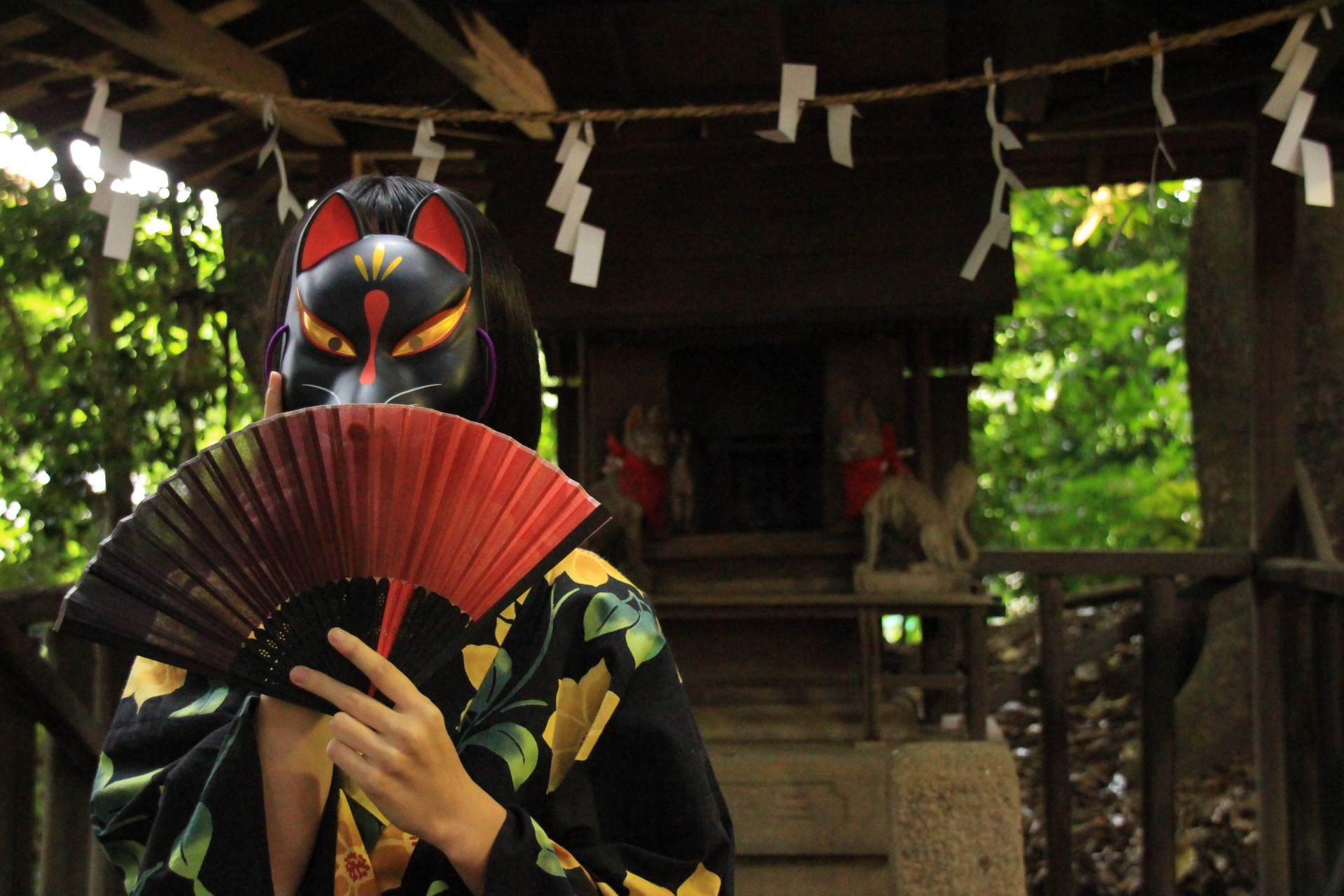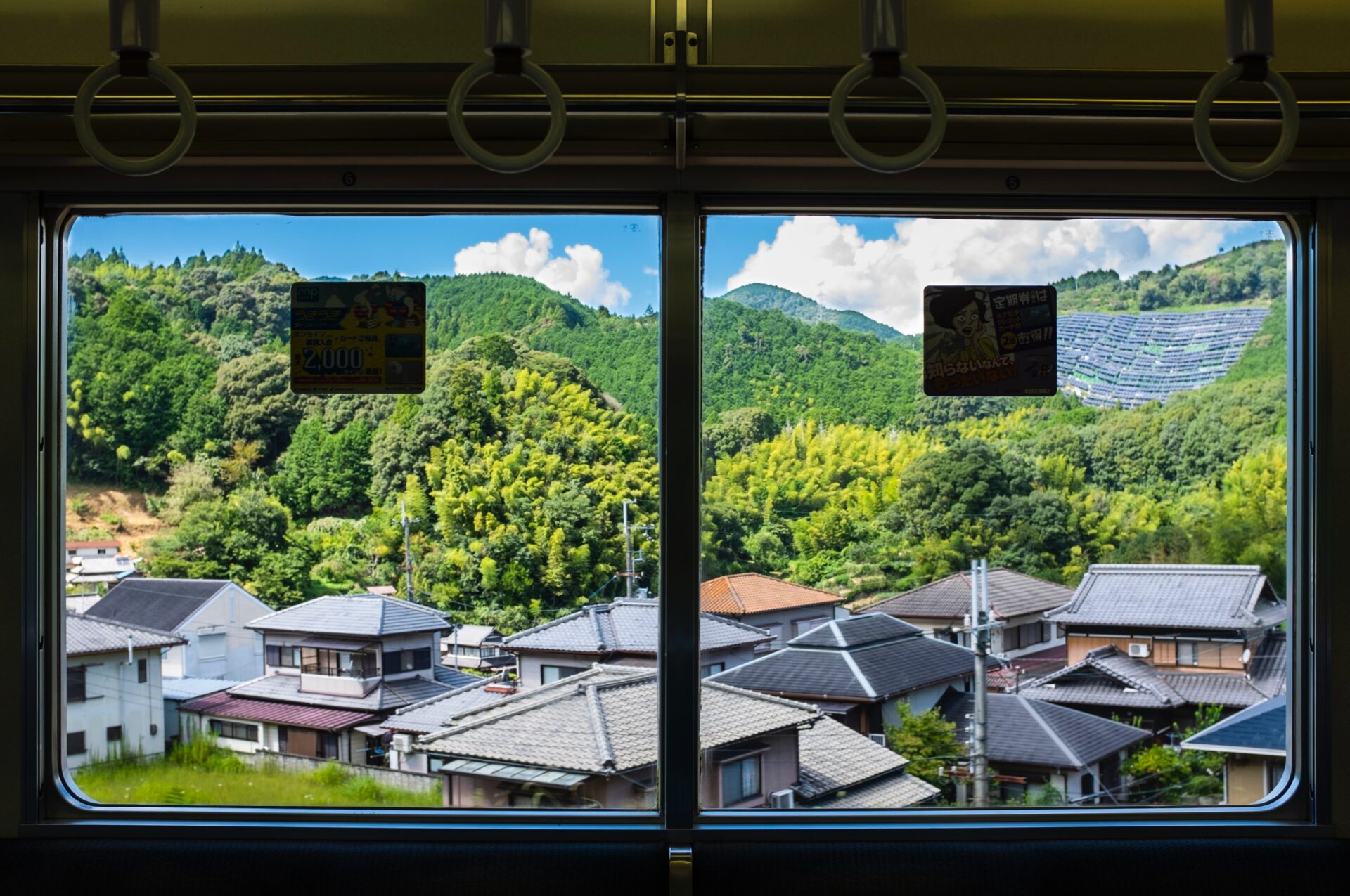Cultures around the world have their fair share of ghost stories to scare the kids and sometimes the adults as well. Japan is no different. Especially on warm summer evenings, people like to hear scary stories to give them a temporary chill.
Many of those stories are about ghosts, but there are also other types of beings that can’t quite be classified as ghosts as we know them. They are called ‘yokai’. Yokai are a type of monsters that often feature in scary Japanese folk stories. There are many of them, some more scary than others. A few of them are even sort of cute! Let us introduce you to some of the most common yokai, and where in Japan you can see them!
Oni
Looking a little like a red devil, the Oni is an ogre or demon who originally lives in hell but also likes desolate places like remote islands or abandoned fortresses. They are very strong and fearsome, and they bring disaster and disease with them. In hell, it is their job to torture the damned souls not unlike Western demons.
Once a year you can see many Oni in Japan, as when the winter becomes the spring in February, people throw beans at Oni to drive them out. The day is called Setsubun. Typically, adults wear an Oni-mask and kids will be the ones to chase the bad Oni away. This event happens in schools and at home, but some temples also do Oni-chasing events which are fun to watch!
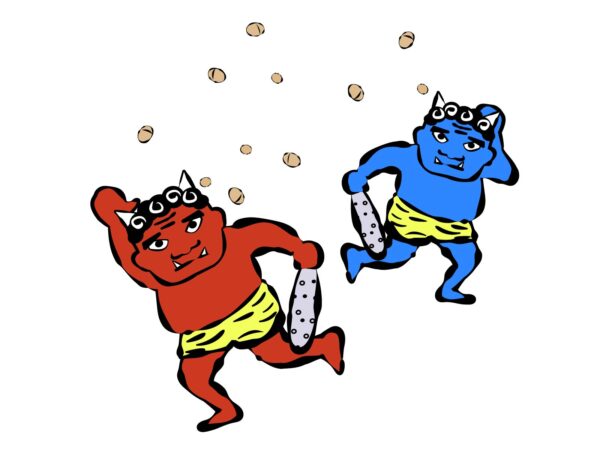
Tengu
Tengu is a long-nosed legendary creature whose sole purpose it is to distract people from the path to enlightenment, the ultimate goal in Buddhism. These devious yokai are in a way attractive at first sight; they can fly, are very strong with great fighting skills, and to top it all off they have magical abilities. It is therefore no wonder that even devout Buddhists can be lured by Tengu to wander from the righteous path. Who does not want to learn his magic powers and fighting tricks?
Even though Tengu sometimes abduct and torture humans, a more common story is that they promise them to teach their victims Tengu tricks. Of course, taking these kinds of shortcuts in life will not lead to enlightenment and will therefore be regretted later.
On the other hand, you might be confused when you find some shrines enshrine Tengu as a messenger of the deity. It is believed that if something bad happens to worshipers, Tengu will fly out to help them and ward off the evil spirits.
There are many theories and stories related to Tengu from different angles, and perhaps that is the reason that makes this legendary creature more interesting.

Kappa
Kappa is a water monster, and while his depiction often looks cute today, he has a dark history. Looking like a cross-over between a turtle and a human, they live in the water and are mainly known for drowning people who come too close to the water. Animals such as horses are also popular victims of Kappa. Warning kids to stay away from Kappa by not coming too close to the water has actually been a popular way to prevent them from drowning.
Kappa have a dish on their head that is filled with water, and it is said that if the water falls off the dish they will become incapacitated. Because of this, there is a very handy way to deal with a dangerous Kappa; make a bow to them, as then they have to bow back and they will lose their water as a result. Kappa is not all bad though, as if you feed him cucumbers and befriend them, they are likely to be nice to you and help you out with, for example, irrigation of your farmlands. If you want to see many Kappa statues, you should head to Kappabashi near Asakusa where there is a shrine that is supposed to hold the remains of a real Kappa…

Zashiki-warashi
In the West, most people would freak out if they would find a child-like spirit in their house. Japan, on the other hand, has a very different relationship with their Zashiki-warashi, or child house spirits. These mischievous but friendly spirits live in the reception room of a traditional Japanese house, and as long as they are with you, it is believed that you will prosper. If you would chase it away, your fortunes may become very bad, so it is better to keep a good relationship with them. In order to do so you can leave them some candies.
They look like they are around 6 years old with a blushing face, and they can be either a boy or a girl. Zashiki-warashi behave like the children they are and like to play tricks such as leaving little footprints around the house or making typical kids’ noises such as top-spinning. The only people who can see them are the ones who live in the house, and children.
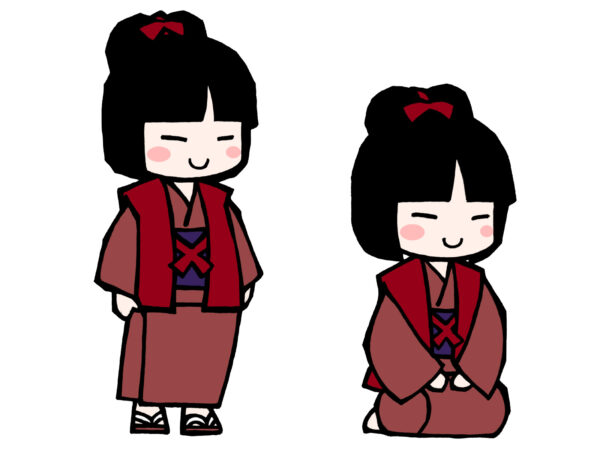
Umi-bozu
The word Umi-bozu literally means ‘sea monk’, and this monster only appears at sea. It looks like a giant head that unexpectedly appears from calm sea water, making it extra scary. When it comes, it sometimes breaks the ship upon its emergence and if it doesn’t, it requests a bucket from the sailors. After giving it the buckets, Umi-bozu still drowns the poor souls who had the misfortune to meet it. But the good news is that there is a way to fool him; if you give him a bucket without a bottom, it will be confused and you can get away.
The most recent alleged sighting was in 1971, when a fishing boat said they happened upon an Umi-bozu. They wanted to harpoon it, but before they could do so it was gone. It is thought they mistook a large sea creature for a monster, but we will never know what it was for certain…
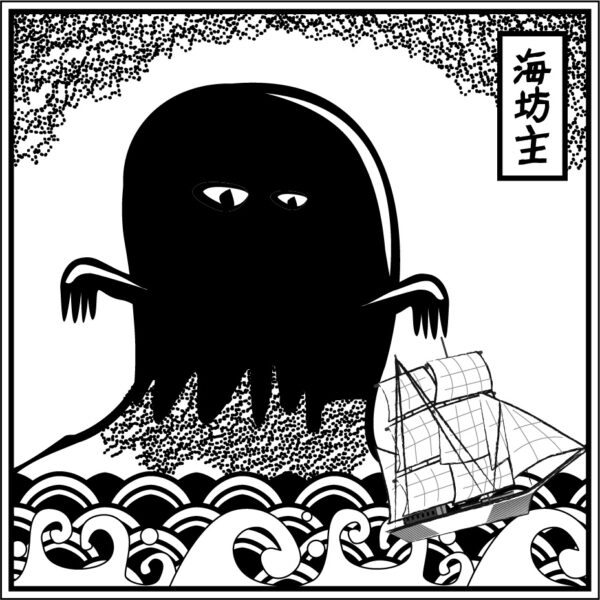
Nekomata
Cats are usually cute, but Nekomata are something else. This 2-tailed cat yokai is very large and has a palate for human flesh. They are also able to shape-shift into humans and deceive people. They usually become older women who behave badly and bring a bad atmosphere with them. Some Nekomata live in the mountains, but there are also house cats that change into Nekomata if they are kept too long.
But it gets even darker. Cats are said to have connections with death, and are therefore able to raise the dead. This power is said to be the strongest in cats that became very old and were treated badly by humans. If you were one of the humans who wronged the cat, she would take revenge by sending your dead relatives to haunt you. So, it is better to be good to the cats in your life!
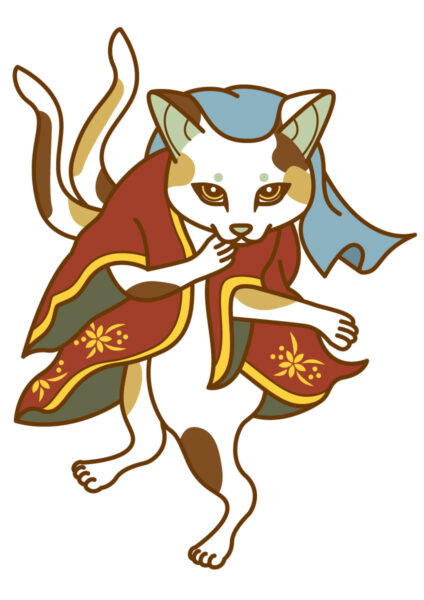
Nurarihyon
The Nurarihyon is a yokai who looks a lot like a human, but with a strange, elongated head. He is an old man, who wears traditional Japanese robes. From the way he is dressed, you can tell that he comes from a good family. Nurarihyon literally means something that appears suddenly and then slips away, which is also why it is similar to the Umi-bozu in some regions.
It is not entirely clear what Nurarihyon’s story was in the feudal time, but in more modern stories he is a yokai who simply enters people’s homes in the evening and just sits down as if it is his home while he smokes and drinks tea. He behaves as if he is the owner of the house, which is why he is often shown as the ‘master of all yokai’ in modern depictions.
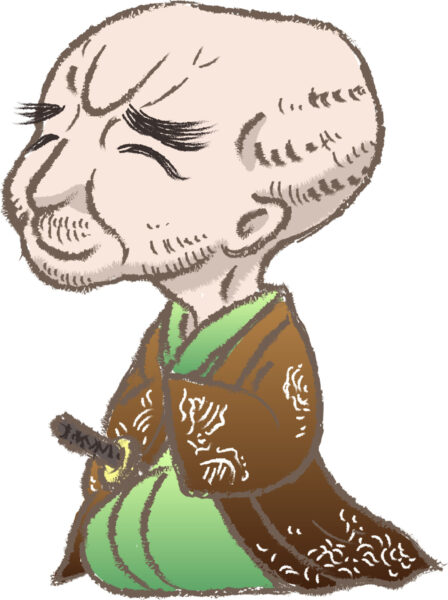
Nue
A disturbing-looking mixture of a monkey, tiger, dog, and snake, the Nue yokai goes way back. In the 9th century, the monster was already described in literature as a fearful monster that appears at night and has the ability to turn into a black cloud. Nue’s bird-like cries are spine-chilling and were believed to be the harbinger of disaster.
In the Heike Monogatari, a book that describes the fate of the then famous Taira clan, one of the stories is about the slaying of the Nue in the 13th century. The Emperor fell ill while the cries of the Nue were heard, and hero Minamoto no Yorimasa managed to shoot Nue with a special arrow. After the monster died and came down in Nijo Castle in Kyoto, they heard the cries of the normal cuckoo and the Emperor recovered. There are still places in Kyoto where this slaying is commemorated, such as the Nue pond in the north of Nijo Castle.
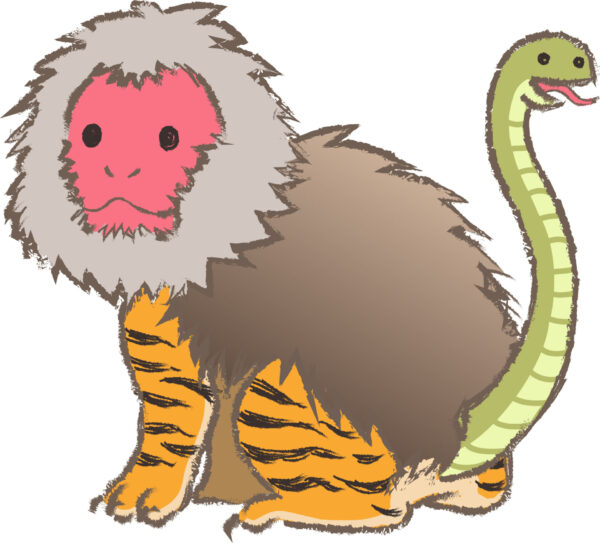
Nurikabe
Most yokai take the form of animals (or mixtures thereof), but Nurikabe is a bit different. The word literally means ‘plastered wall’, and it is pretty much that, a wall that stops people from going where they want. Many ghost stories try to explain things that people can’t explain (yet), and the story of the Nurikabe is no different. Before the invention of the smartphone it was easy to get lost while traveling, and suddenly finding an invisible wall that extends forever and can’t be climbed over is one explanation on why that happens.
So what does an invisible wall look like when depicted? Nurikabe appears in popular modern anime series ‘Gegege no Kitaro’ and ‘Yokai Watch’, and in both series he looks like a wall with arms and legs. He’s not the scariest yokai, but definitely an inconvenient one!
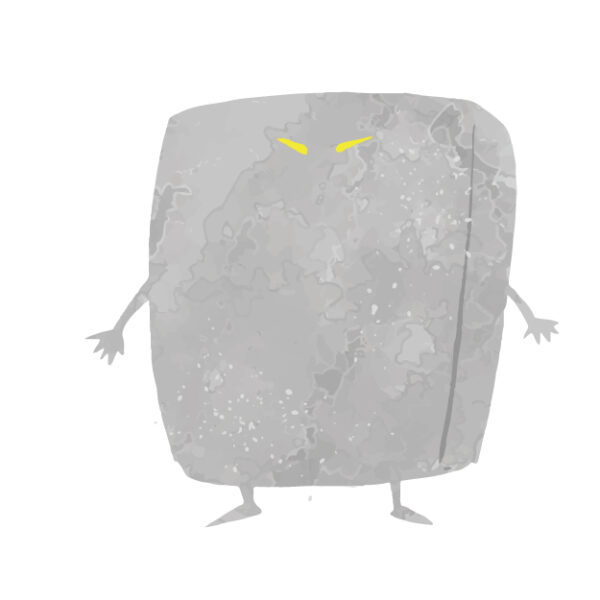
Gashadokuro
Gashadokuro is definitely one of the more gruesome yokai out there. He is a giant skeleton that is about 15 times larger than a normal human that is built up from the bones of those who died in a bad way and weren’t buried properly. They die of things like starvation or plague, and when they become Gashadokuro they prey upon lone travelers at night.
You can hear them coming because their teeth rattle loudly, but because the people are already dead you can’t defeat them and death is certain when they come for you. Is there no hope at all? Luckily there are said to be Shinto charms (omamori) that can ward them off, and once they have taken out all their anger on the living, Gashadokuro will collapse and no longer be a nuisance.
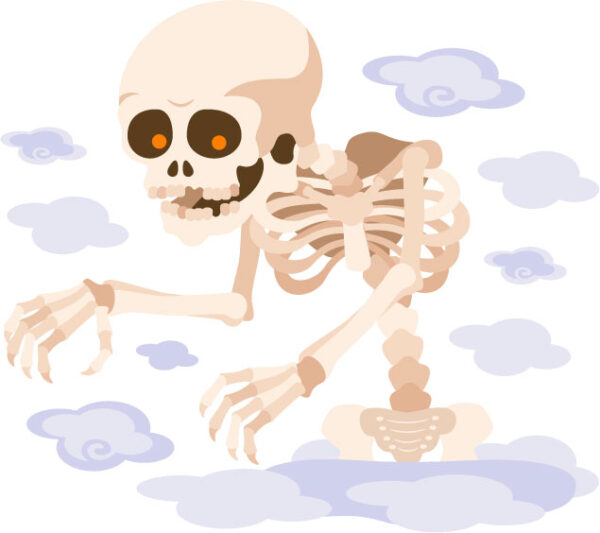
Kasa-obake
This yokai is a bit funny, as Kasa-obake looks like an umbrella that jumps around on its one leg. They usually have one eye and arms, and they are one of the first yokai that is not an animal or typical thing people are scared of, but an object. They tend to appear on rainy and windy days, and in some regions it is said that Kasa-obake can lift people into the air after which they either crash back to the ground or disappear forever.
In Japan, objects are capable of having a spirit, and it is said that when things get older they are more likely to get spirits. This may be one of the reasons that many Japanese people have a hard time throwing away their things, and cleaning guru Marie Kondo invented her ‘throwing away ceremony’ to make that process a bit easier.

Kitsune
Just like in Western folklore, in Japan foxes are also seen as cunning and wise animals. The kitsune is a yokai fox who can play tricks on humans, especially those who deserve it like arrogant samurai, but they can also become their loyal friends who help them out of difficult situations. Foxes in Japan are said to have supernatural talents such as shape-shifting (often into beautiful women!) and extreme longevity.
Kitsune are not only intermingling with humans, though, as they are also seen as messengers from Shinto gods. This is why you usually see the statues of two foxes at the entrance of Inari Shinto shrines.
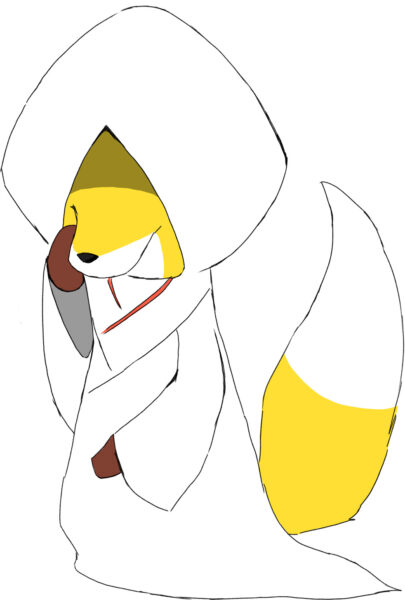
Tanuki
Similar to Kitsune, Tanuki (Japanese raccoons) are animal yokai who like to trick humans and turn into pretty women. There is one thing that really stands out about their statues that you can see everywhere in Japan; if you look between their legs you will see an enormous scrotum. What on earth does Tanuki need that for, you may wonder? Well, it is said that he can transform it into whatever is handy at that moment.
This is also why so many businesses have a Tanuki statue in front of their shop, because they can help out humans with their scrotum’s amazing abilities, they are supposed to bring luck to the shop.
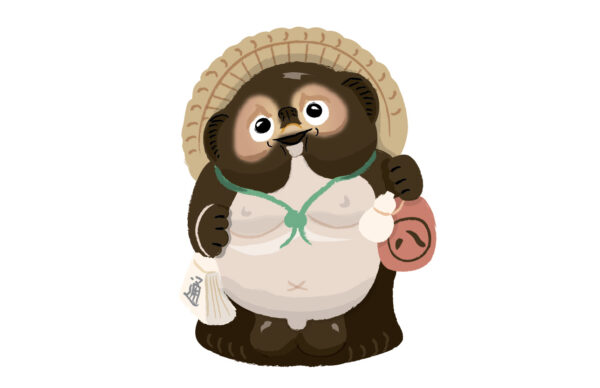
Where to see Yokai in Japan?
We already mentioned a few places where you can spot yokai in Japan, like Kappabashi, Inari shrines, and shop fronts, but there are some destinations where the true yokai-hunter should go. In Kyoto, there is a place called ‘Yokai Street’ with statues of various yokai and special yokai events. If you make it all the way to Shimane, you will want to check out Mizuki Shigeru Road in Sakaiminato, the hometown of the creator of earlier-mentioned Gegege no Kitaro. And close to Tokyo there is Mount Takao, where you can see some large statues of the Tengu which are worshiped there.
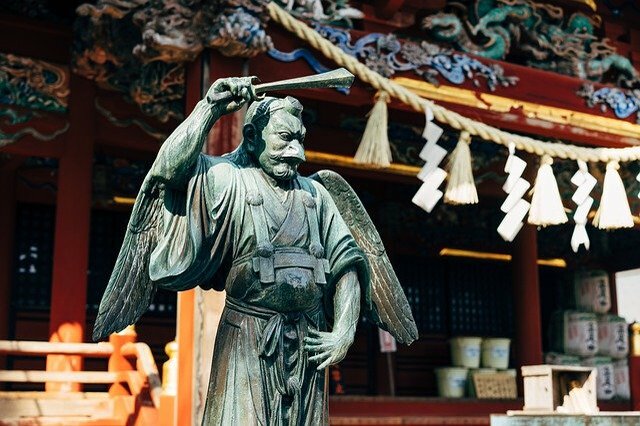
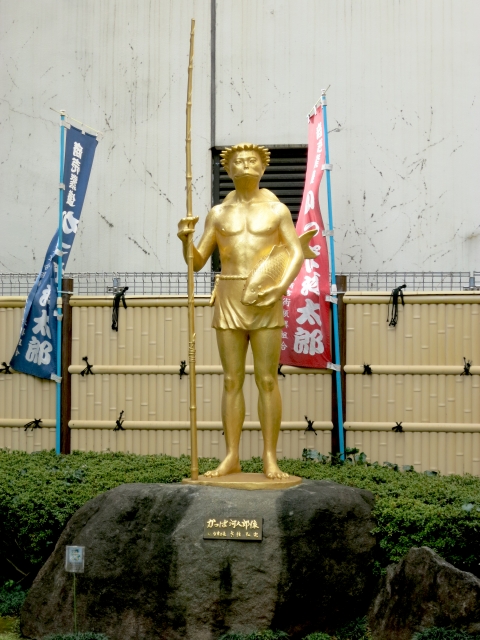
If you want a private guide for a full day and are interested in learning more about yokai and visiting related places, it is a great idea to book an experienced guide through us!
Follow us on Instagram, Facebook and Twitter for more travel inspiration. Or tag us to get featured!
Happy travelling!
Other articles you may like



Stefanie Akkerman moved from the Netherlands to Japan in 2013 with her Japanese husband and son. She jumped into the niche of Dutch tour guiding in Tokyo and Kamakura in 2015 and occasionally writes articles about all the great sights and activities Japan has to offer. She loves (Japanese) food, and to work that all off she goes diving, snorkeling, cycling, or hiking.
This post may contain some affiliate links. When you click through and make a purchase we may receive some commission, at no extra costs to you.
